One of many plants that look like dandelions, sow thistles can be easy to overlook. These common edible weeds have a long history as a food around the world, and I prefer them to dandelion greens. They're very safe plants to learn, and if you're like me, they might be in your yard right now. In this post we'll go over how to identify a few different types of sow thistle and how to use them in the kitchen.
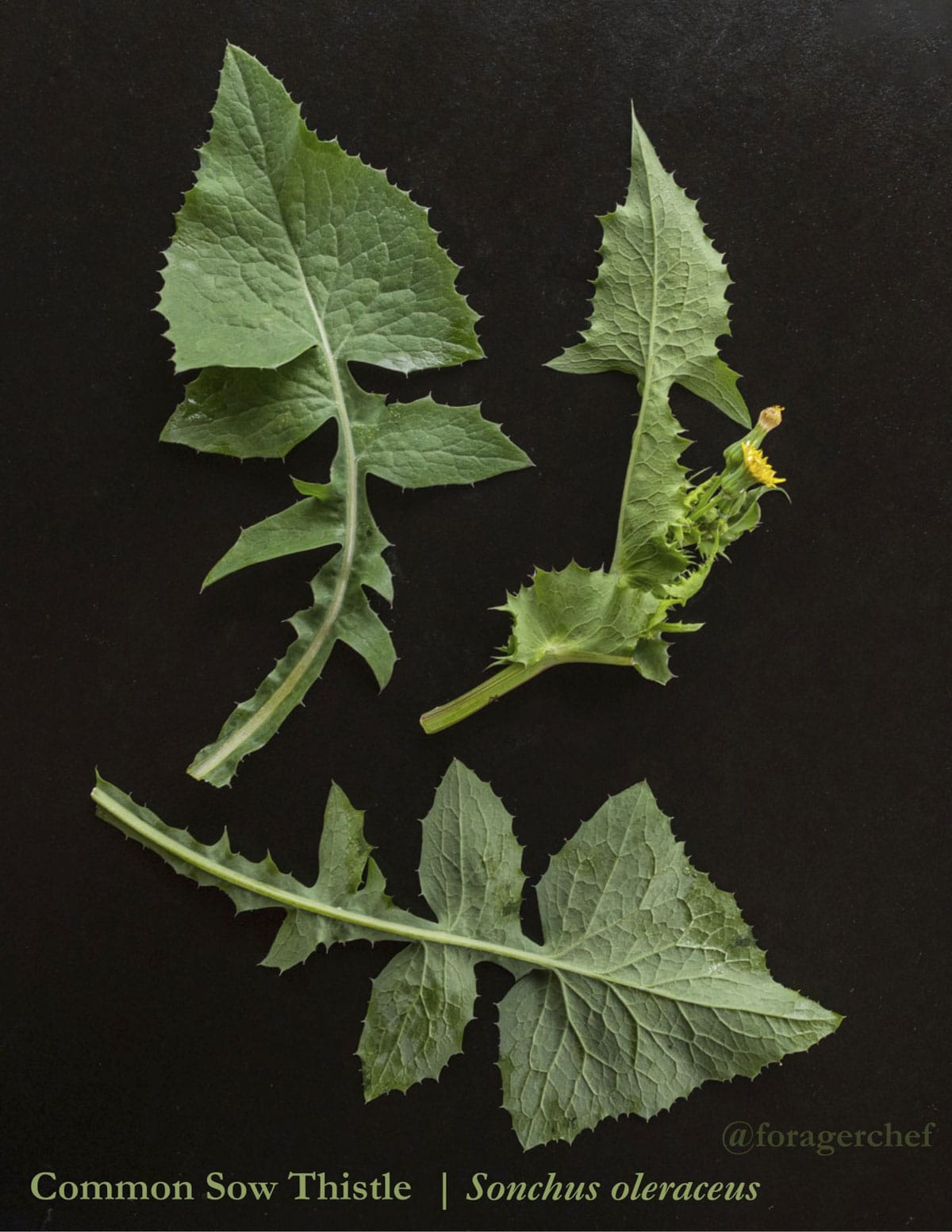
Background
Sow thistles are typically annual weeds in the genus Sonchus (pronounced like song-kuss), with the exception of perennial sow thistle that spreads by rhizome. The name Sonchus comes from ancient Greek word for hollow, referring to the hollow stems. The Greeks know their edible wild plants, and have likely eaten them as "horta" for thousands of years.
At a higher level, the Sonchus genus is within the family Asteraceae, making the plants cousins of dandelions, chicory, sochan, thistles, and many other edible wild greens you might already be familiar with.
Like wild lettuce, the stems give off a white latex when cut. Regarded as a galactagogue in some folk medicines (like milk thistle) the name comes from the belief that if given to sows as food they would increase milk production. I haven't tested this personally.
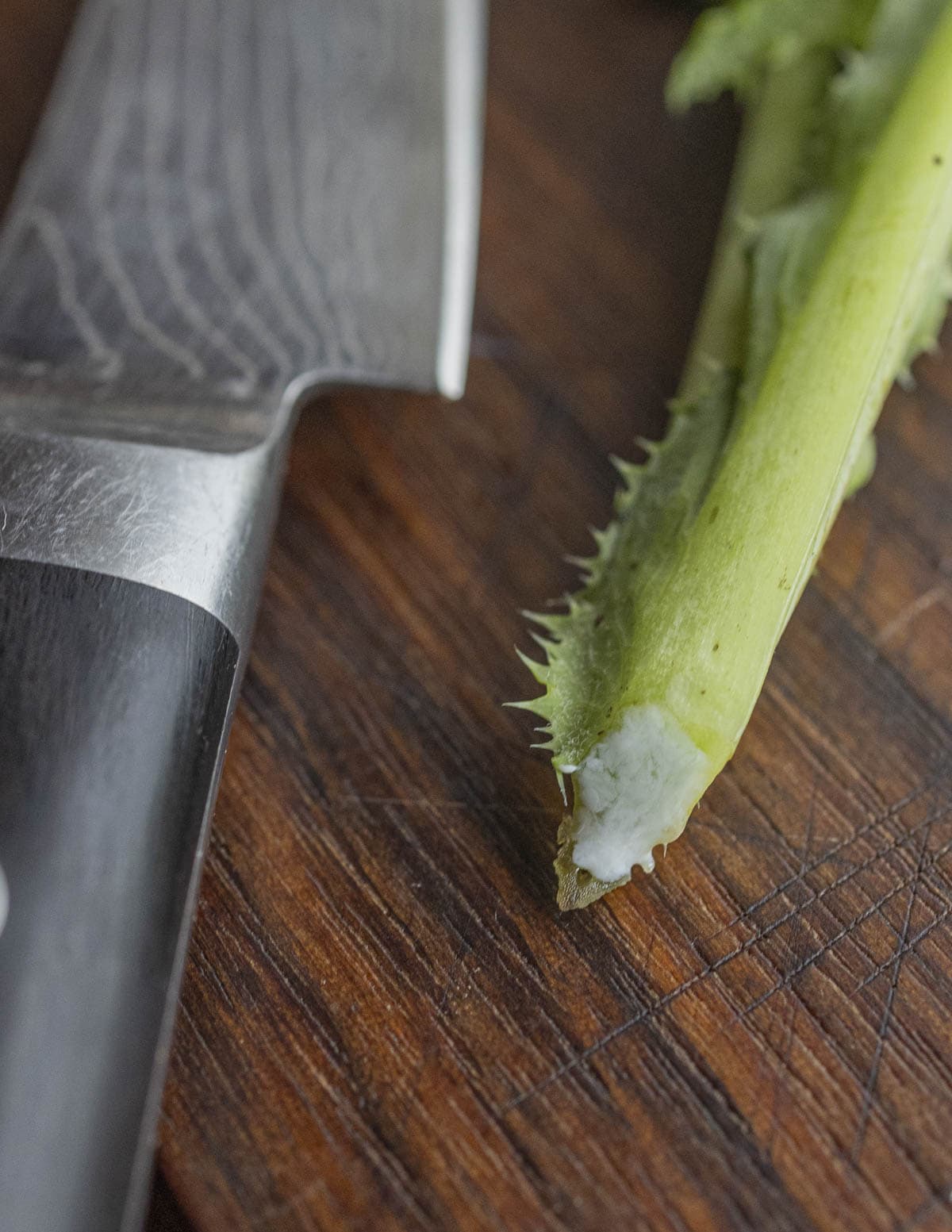
I overlooked these plants until Sam Thayer gave me a bag of tender prickly sow thistle tops a few years ago and I've been hooked on them ever since. In his field guide to edible wild plants of Eastern North America (regarding Sonchus oleraceus specifically) he says:
This is the best of our three sow thistles...where it is both large and abundant it is one of the best greens to know.
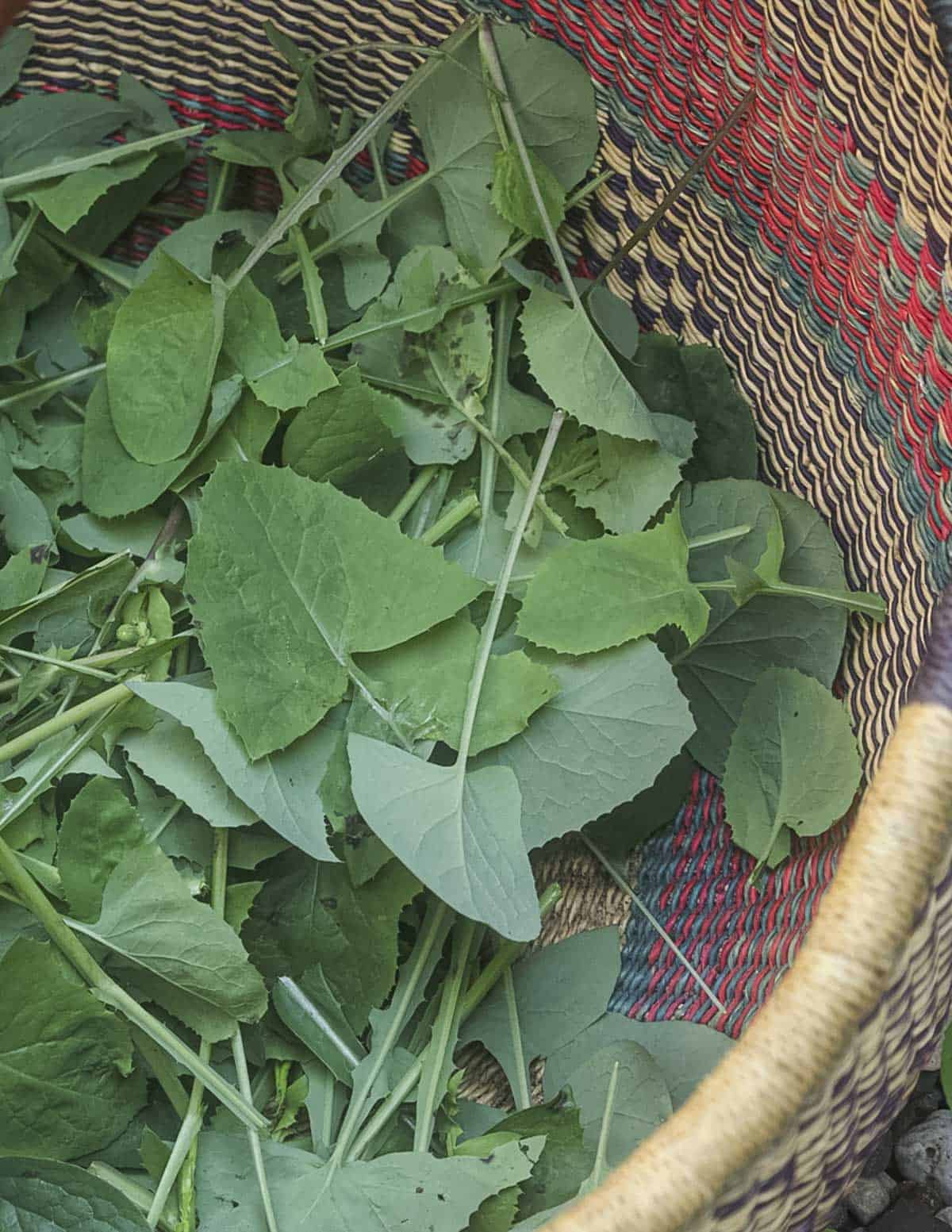
I agree, and I think once you try some you'll love them too. These greens are abundant and generous as they can give multiple harvests through the growing season. Milder in taste and far less bitter than dandelion greens, they're also delicious.
Sow Thistle Identification
While the genus Sonchus should include over 100 species, there's three distinct varieties Sam Thayer describes in his field guide. I pick two of them regularly we'll go over: the common Sonchus oleraceus, and the prickly Sonchus asper.
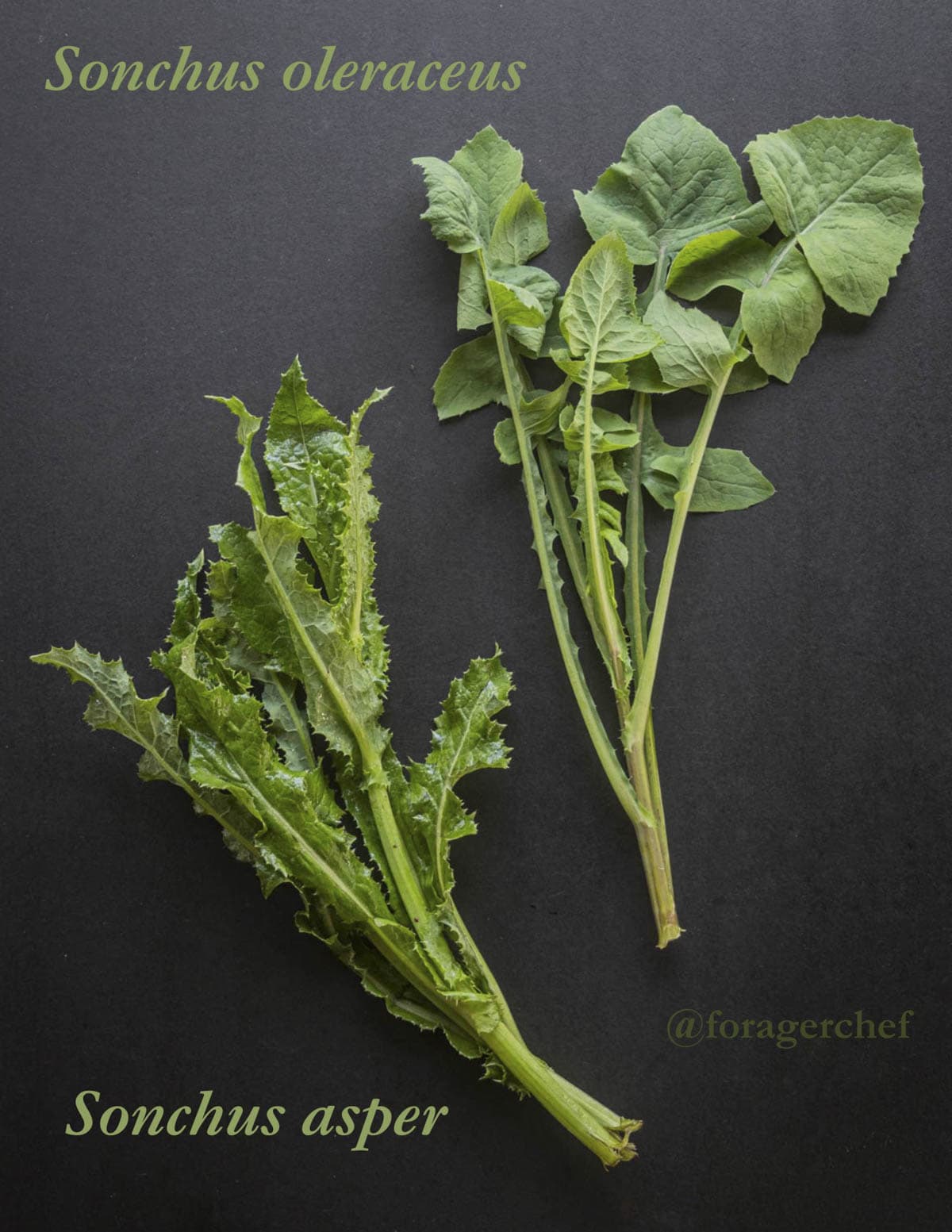
Like mustard greens, as there's no poisonous sow thistle, knowing the exact species isn't necessary for eating them in my mind. As shown below, If it's a weed that looks like a dandelion, has a hairless midrib and leaves that clasp the stem, you probably have a sow thistle.
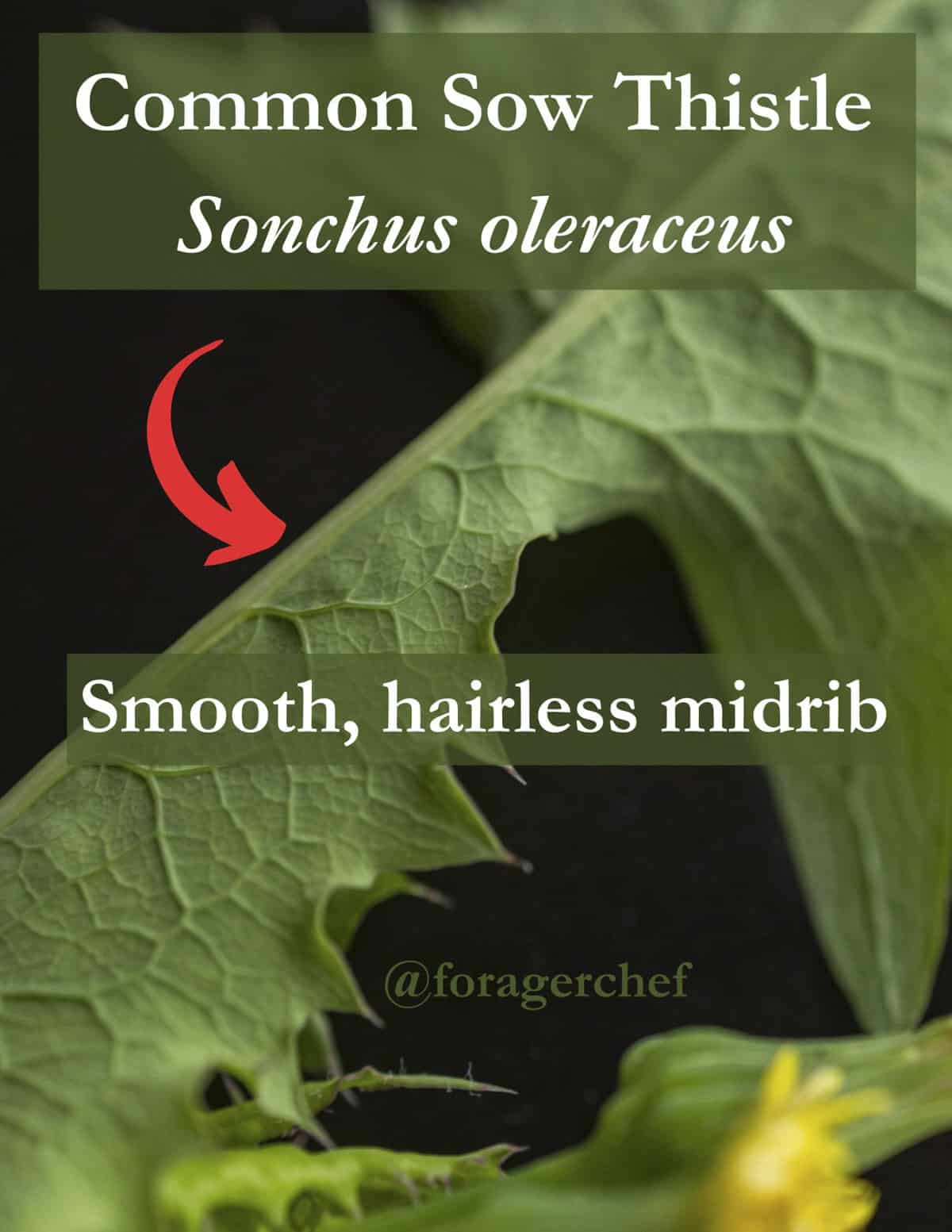
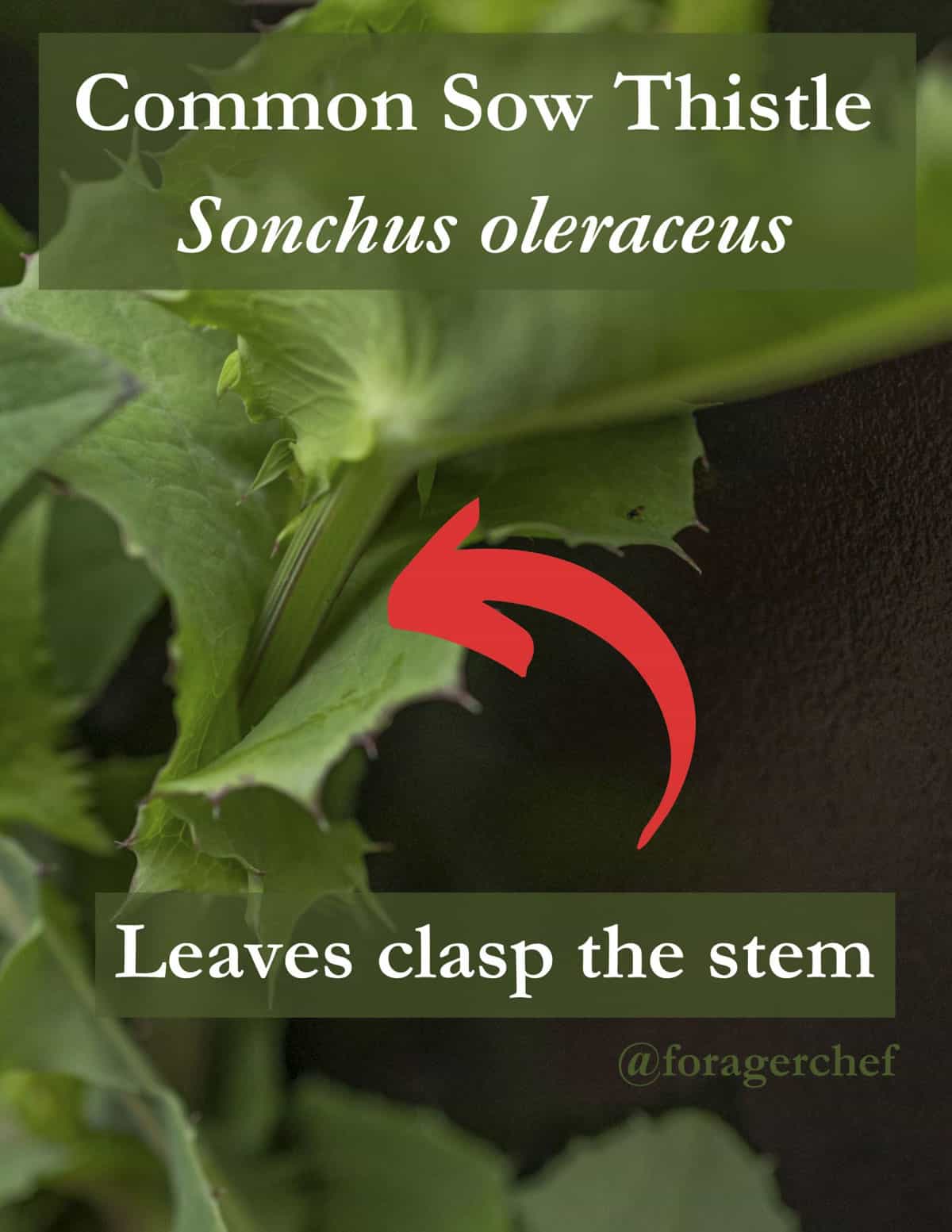
Just like dandelions and their cousins, the seeds are borne on little white balls of fluff that look like dandelions after the yellow flowers appear.
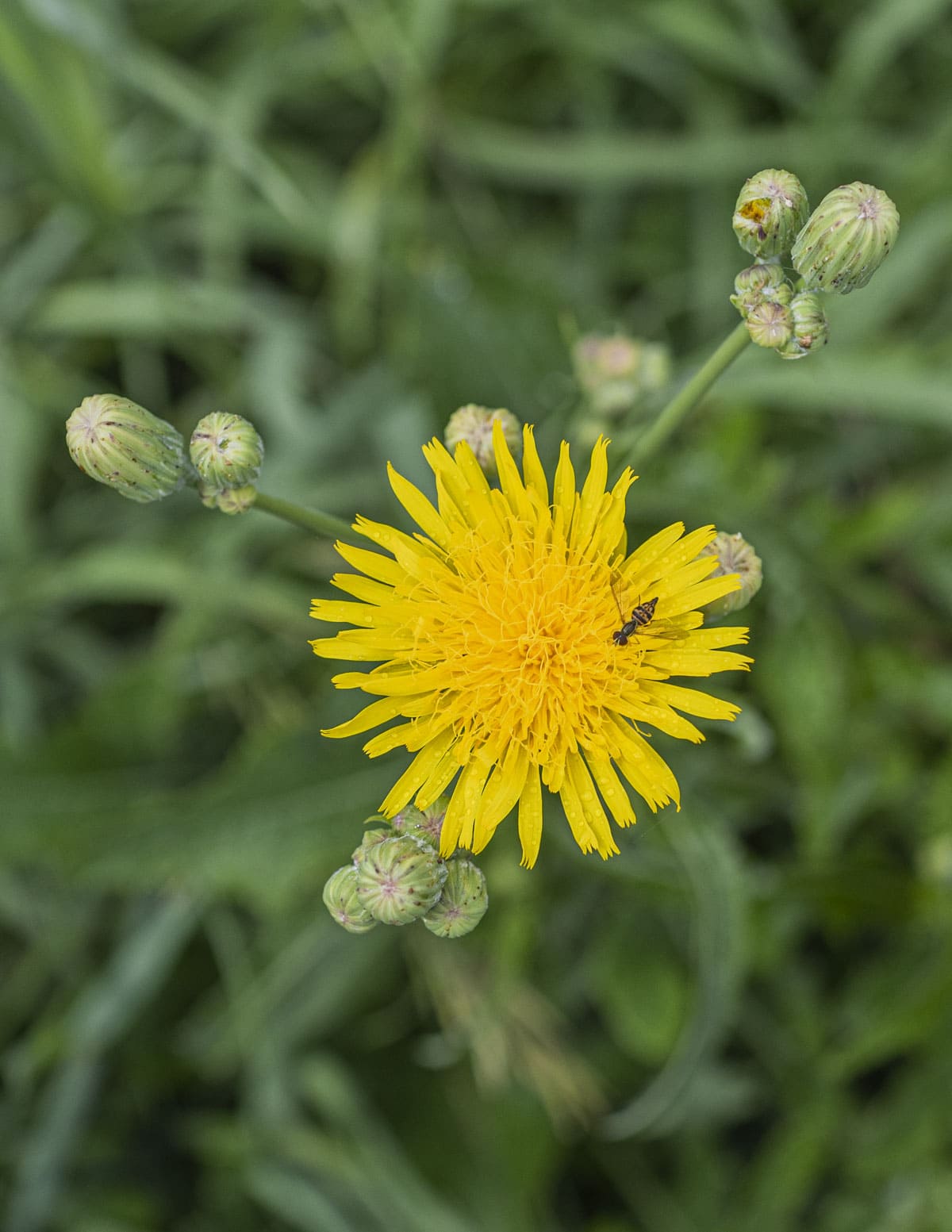
If you want to grow them, I've even seen prickly sow thistle seeds for sale on Amazon.
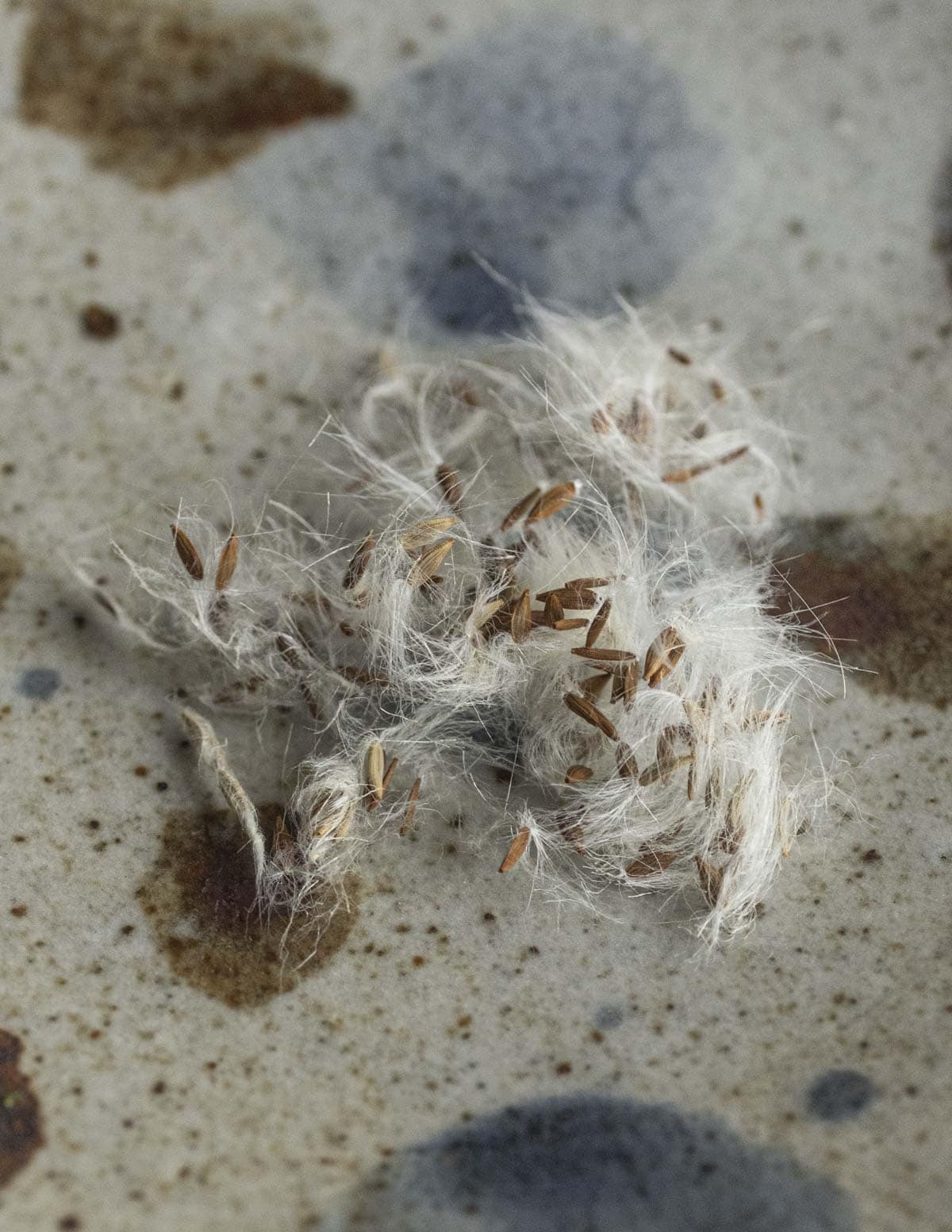
Common Sow Thistle (Sonchus oleraceus)
As the name implies, this is one of the most common types of sow thistle. Long known as a food, the word oleraceus roughly translates to "vegetable or edible green" from Latin. With its tender, delicate leaves and mild flavor it's no wonder it has a long history as a food.
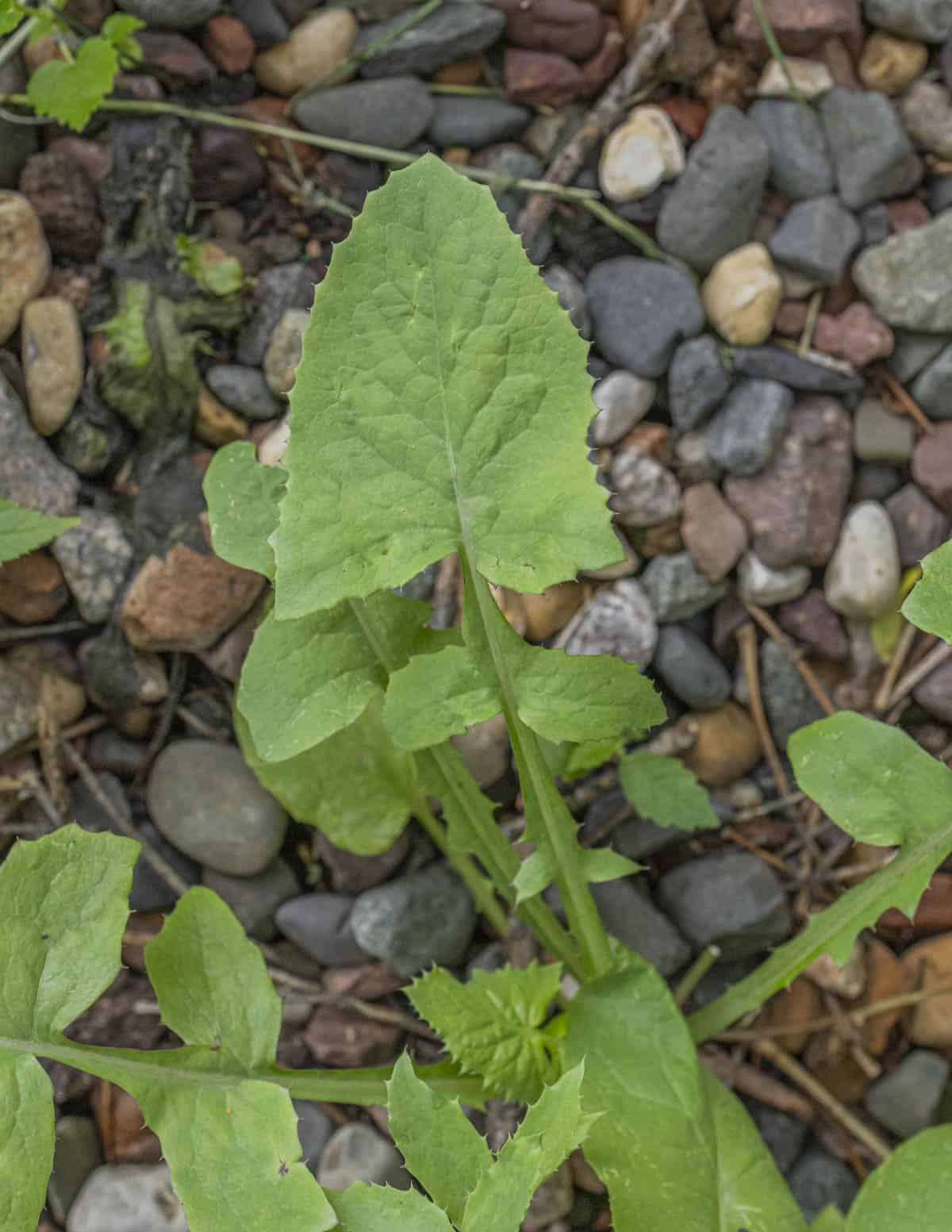
The leaf margins are erratically toothed with small spines. They only look prickly-the soft leaves are easy to handle like any other leafy green.
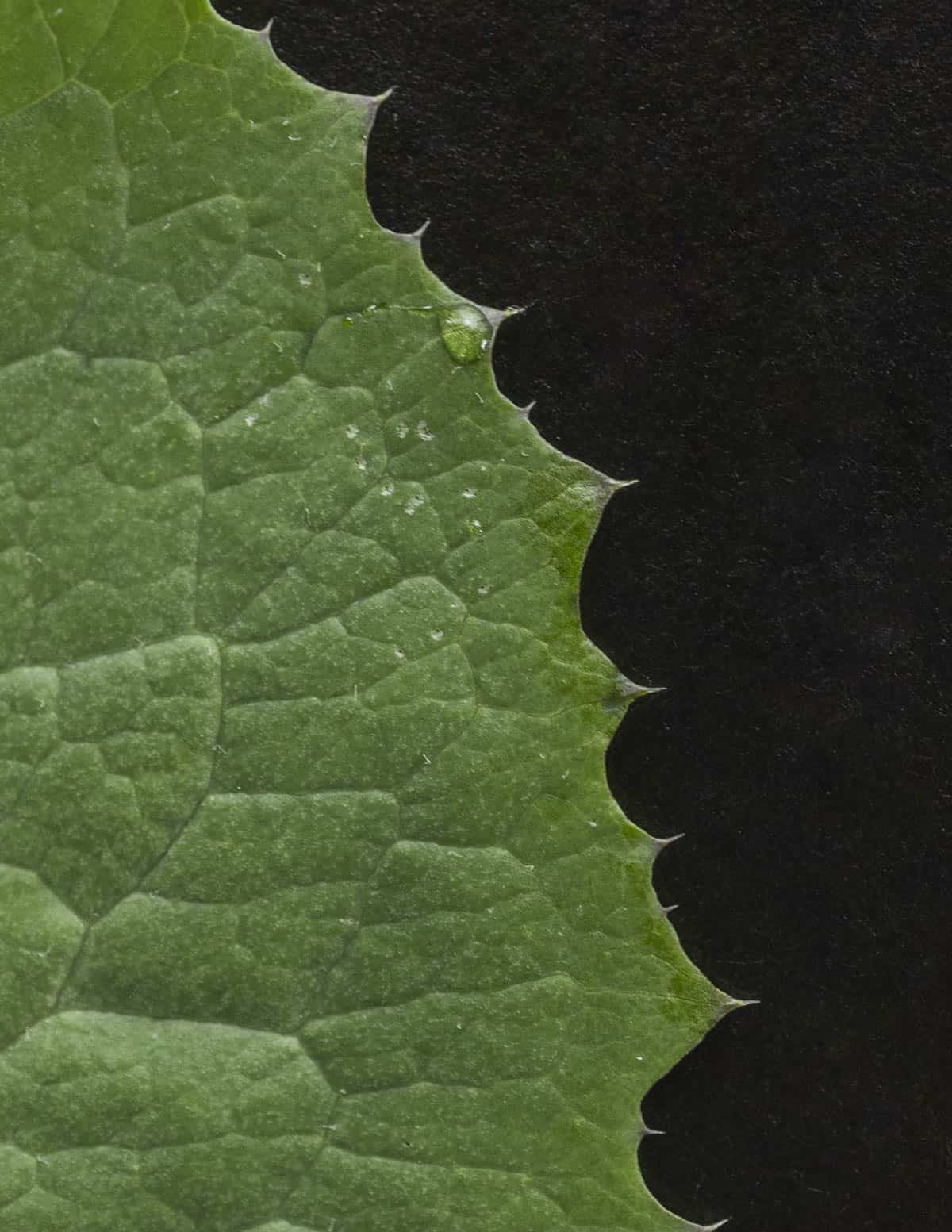
Like wild lettuce, each plant will make numerous yellow flowers from a loose cluster of flower heads (known as a peduncle) somewhere in the range of 3-16 per plant.
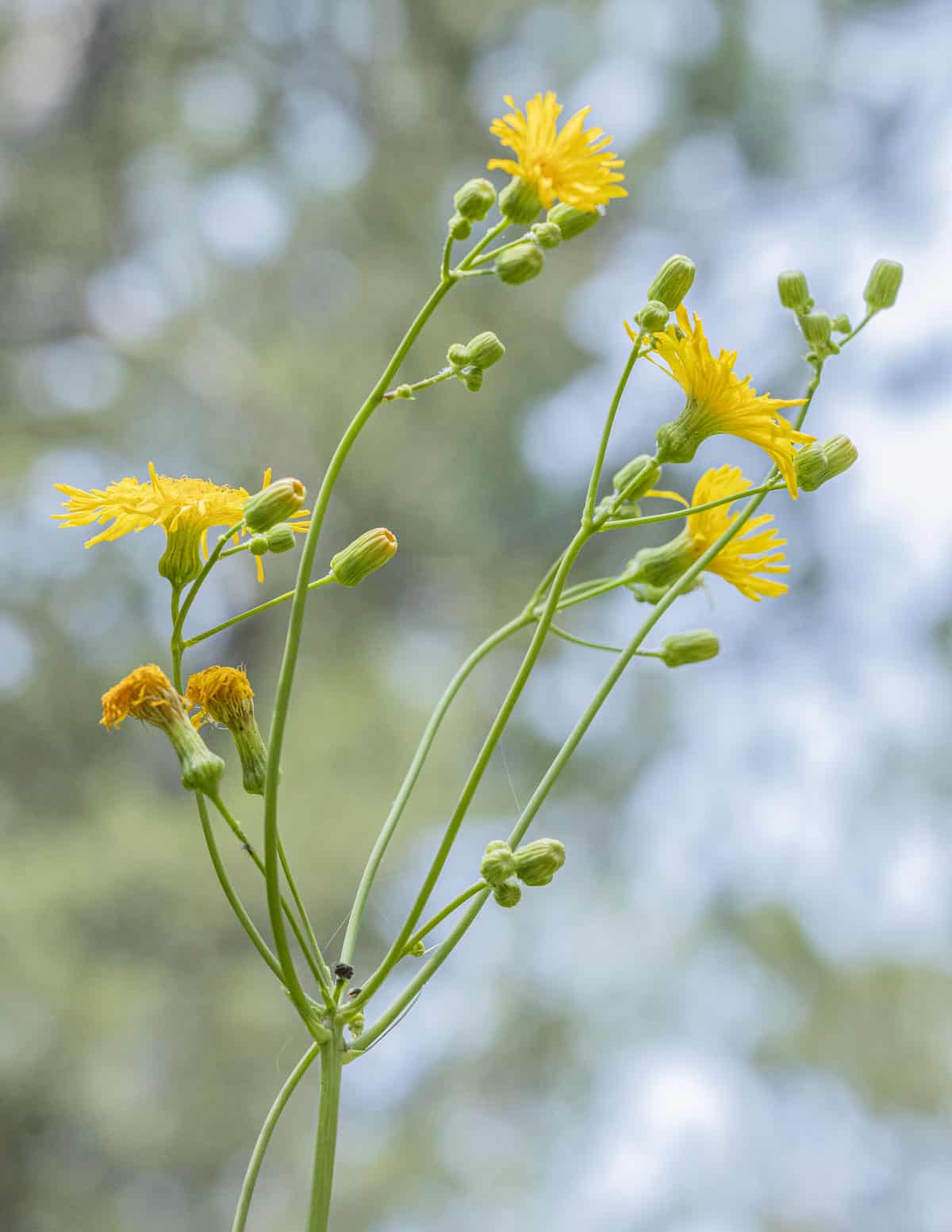
From a cooking standpoint, the leaves of S. oleraceus are softer and delicate like arugula. Unlike their prickly cousin below they can be great sliced up and eaten raw in salad.
Prickly Sow Thistle (Sonchus asper)
Also known as spiny sow thistle, this variety has glossy leaves that are more firm and sturdy than the S. oleraceus. Their sturdy texture also means a more robust shelf life compared to other species I've eaten which wilt quickly if they're not refreshed in water, dried and refrigerated.
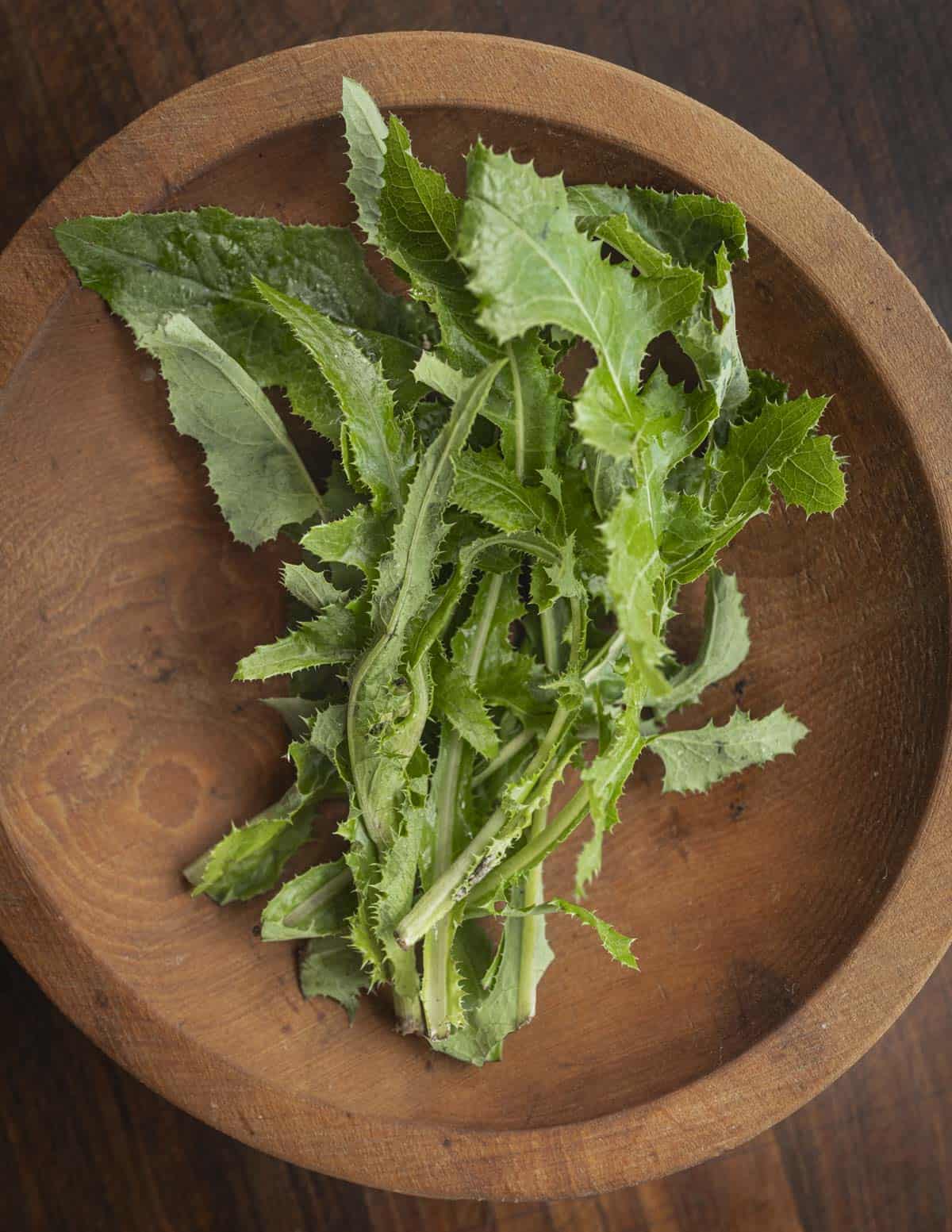
At a glance it can easily be confused with prickly lettuce (Lactuca serriola), but the prickles aren't as rigid and you can grasp them without worrying about getting poked.
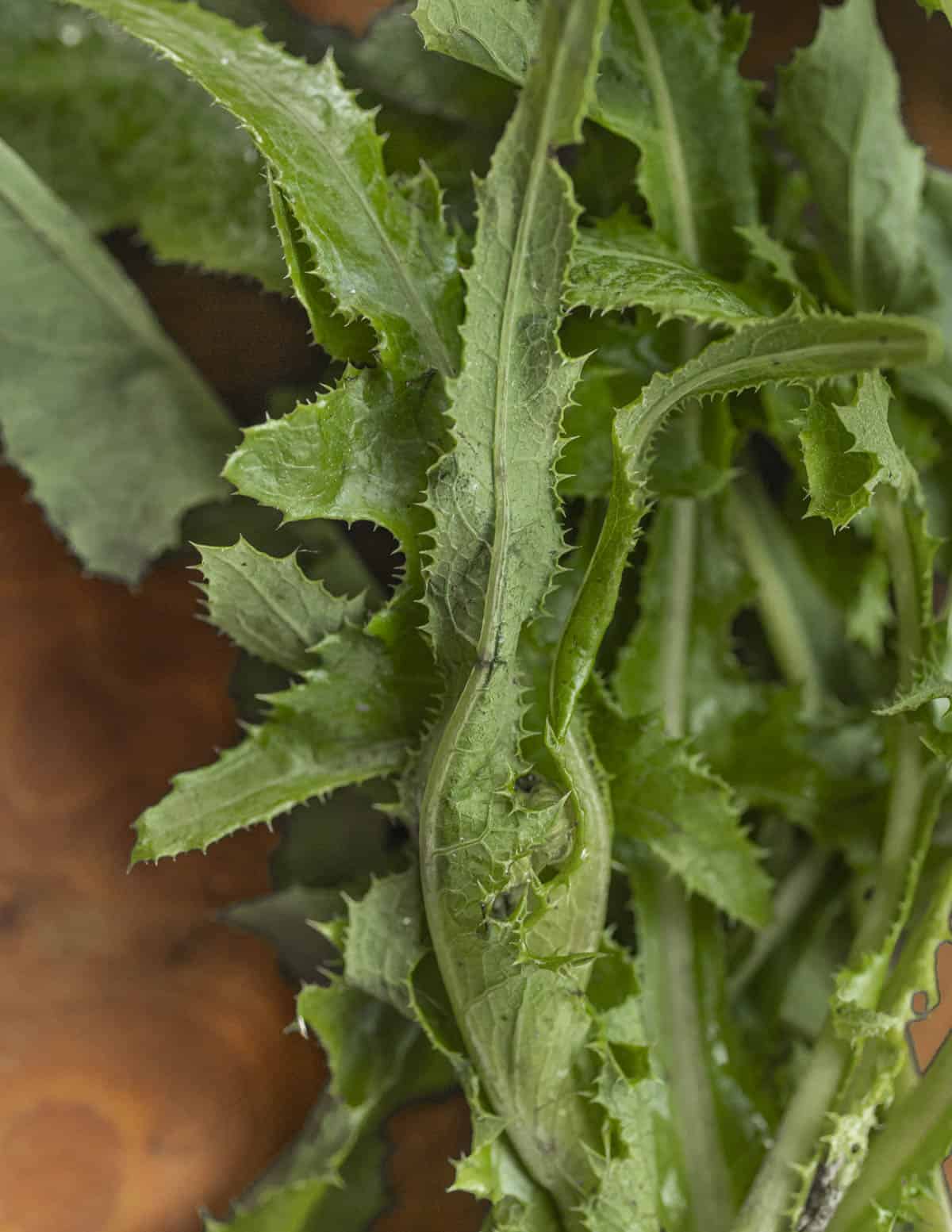
While not quite the equal of S. oleraceus as a food, it's a fine green to eat I'll pick whenever I see it. In my experience, anyone who tries it will find the flavor and texture more agreeable than prickly lettuce. Both greens work well for dandelion kimchi.
Sow Thistle Look Alikes
The two most common plants that can be confused with Sonchus in my mind are dandelions and wild lettuce, both of which are edible. To a lesser extent, Creeping thistle (Cirsium arvense) could be confused with prickly sow thistle. Creeping thistle is technically edible, but the spines are much more pronounced and the plant is tough and difficult to handle.
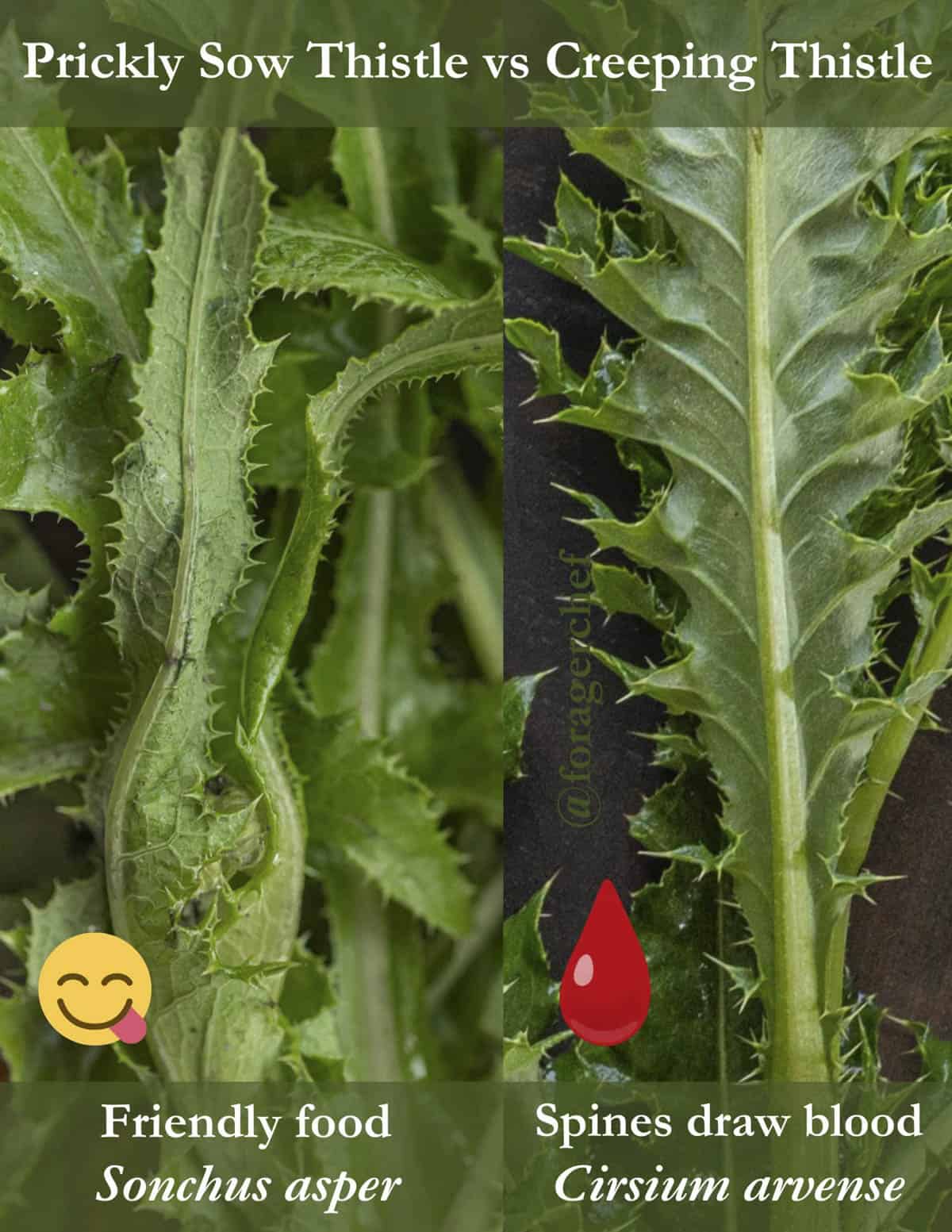
All the different names and species can seem intimidating, but there's a few key points that will help you easily identify all of them. With the exception of groundsels (Senecio vulgaris) that don't grow where I forage (and are definitely dangerous to humans and animals) all the look alikes I know of are edible. Here's the most common ones that grow in the Midwest.
Dandelions
Dandelions resemble Sonchus plants (especially common sow thistle) as they grow in a rosette form, have yellow flowers and a hairless stem. But, they're easy to tell apart from the leaf shape and flowers. Here's a few key points:
- Dandelions are generally much shorter plants at maturity, while Sonchus can be multiple feet tall when flowering.
- Dandelions have a more irregularly lobed leaf shape while common sow thistle has a distinct arrowhead-shaped leaf tip.
- Dandelion flowers have one flower per stem, while Sonchus plants have a cluster of numerous flowers.

Prickly Lettuce
In my mind prickly lettuce is the plant most likely to be confused with Sonchus, particularly prickly sow thistle. While both plants have small spines, the spines of prickly lettuce are more pronounced.
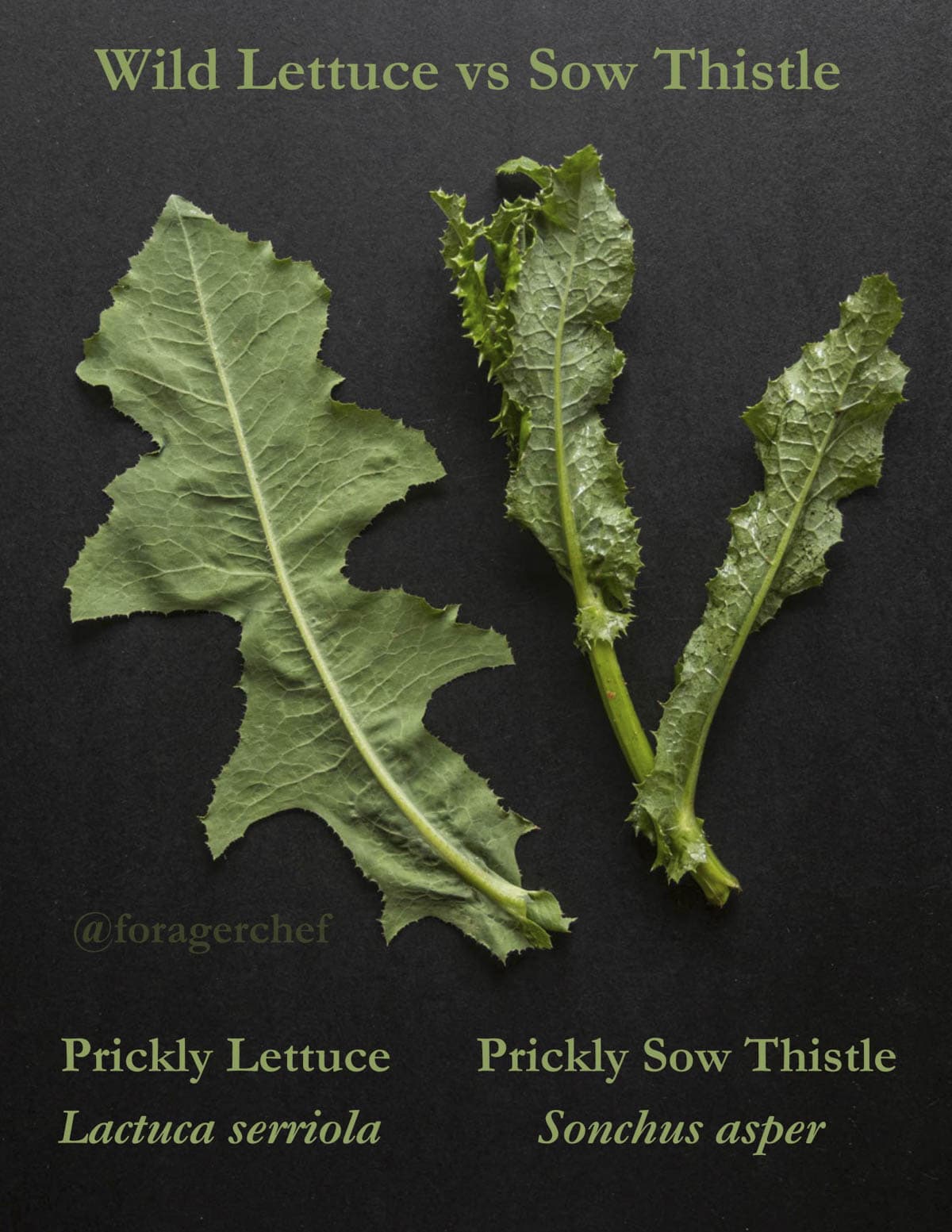
The easiest way I know to tell the two apart is the underside of the leaves. As shown in the image below, wild lettuce typically has hairs or prickles on the stem, while sow thistle typically doesn't. Another difference is the flowers. Not all prickly lettuce has yellow flowers, but Sonchus will.

How to Use Sow Thistle in the Kitchen
If you like dandelions you'll love these plants. Sow thistle greens taste reminiscent of dandelion greens, but milder, less bitter and, in my experience, generally more tender if picked at a good stage for eating. Like most greens, they'll be the most tender young, harvested before the plant flowers or bolts.
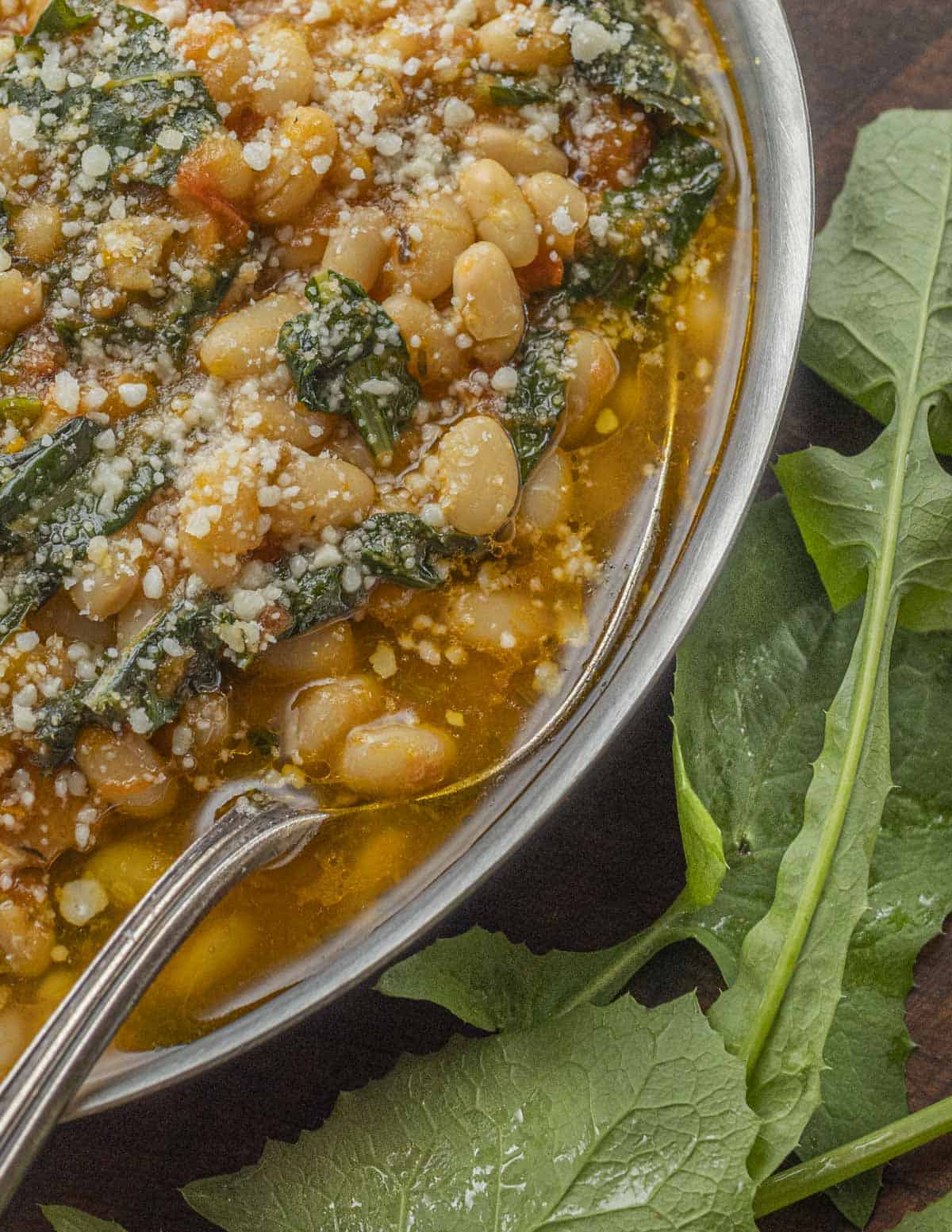
Very tender leaves of S. oleraceus can be simply fried up, added to dishes like spinach or eaten raw. In spring the young basal leaves are harvested, In summer the tender tops are available, if you can beat the deer to them.
Harvested at any stage, I blanch S. asper regardless of what I'm making as it's a more sturdy green.
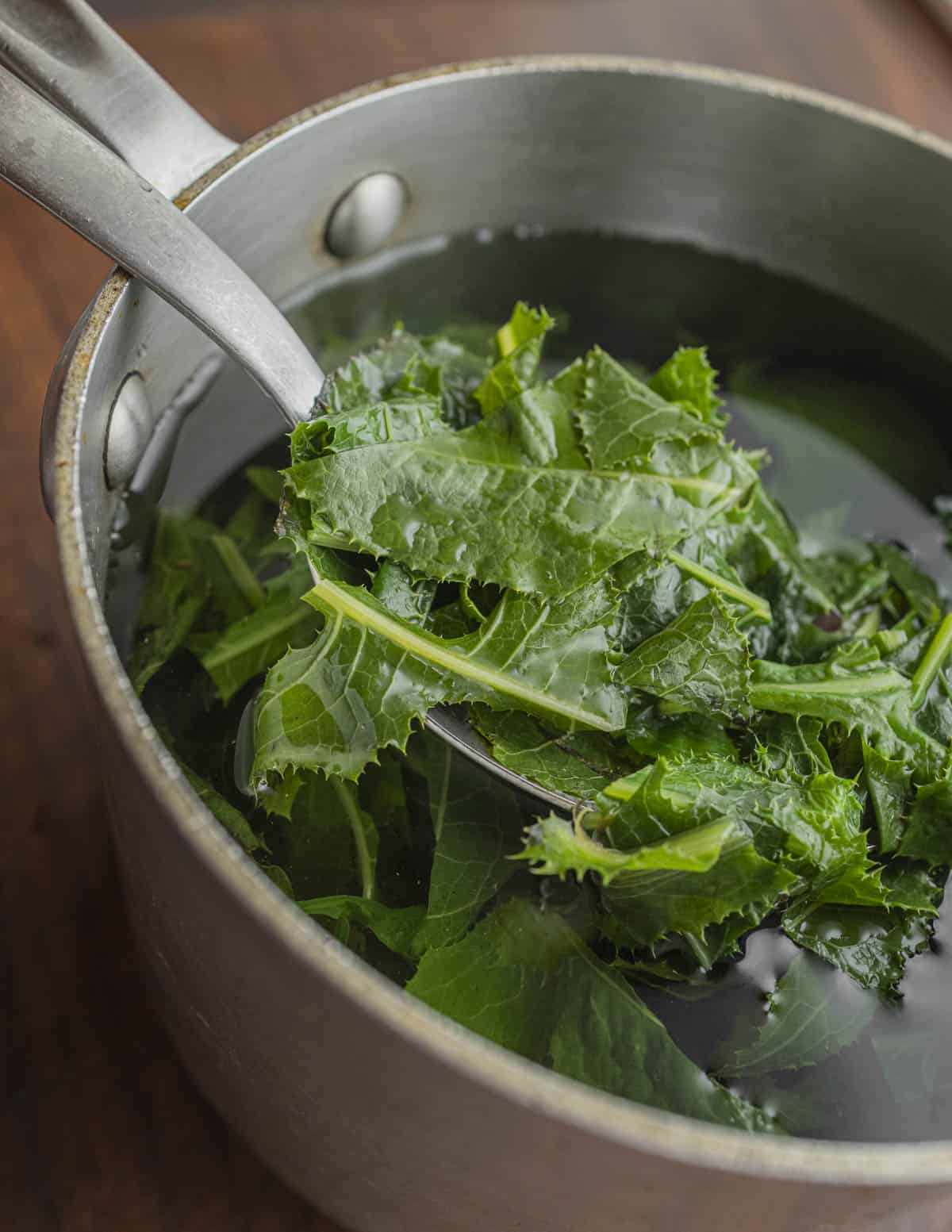
Just like dandelions and other bitter greens the plants have a natural affinity for things like:
- Tomatoes
- Beans, especially white beans
- Hot chili and spicy seasonings
- Cheese, especially sharp sheep milk types like pecorino
- Salted, cured and smoked meats
- Eggs
- Caramelized onions, as with the Lebanese dish Hindbeh
Any edible variety can be used how you'd cook different bitter greens. If you have a few handfuls they're great added to soups and stews like the minestrone pictured below.

As it can take longer cooking, soups and stews are probably my favorite prickly sow thistle recipe. My turnip greens soup is a good place to start if you have a bunch.
Another one of my favorite things to do with bitter greens is to stew them until tender with onion, garlic, sausage or bacon, crushed red pepper, tomato and beans. Served with a shower of grated pecorino cheese and grilled bread it's a simple, filling meal I could eat every day. Sometimes I add a fried egg.

Very young plants can be good fried as a side dish. To do that, cut into 1 inch pieces, wash them and cook slowly in a pan until tender. The water that clings to the greens is enough to steam them just enough to ensure they're tender.


Jake R
I have prickly sow thistle and I read somewhere where you an dry the hard stems for about a week or two, then grind them to a powder and use in food. Is this beneficial and okay to do? Thanks!
Alan Bergo
This doesn’t sound like something I’d do. The plant is delicious when young and tender so I’d keep things simple here.
Sheila
I appreciated your post today. I found a volunteer S. Asper in my front mulch bed this morning. (Right next to our volunteer leopard lily!) I love all the beautiful "weeds". Thank you!
Erik
In some parts of the country, a few groundsels (formerly Senecio sp., but I think most North American ones are now considered to be in the genus Packera) might be confused with Sonchus. That is important because the Senecio tribe is very dangerous due to pyrolizidine alkaloids. Eattheweeds.com (based in FL, where Sonchus are winter annuals) has a write up, but it would probably be wise to become familiar with the local Packera/Senecio plants and avoid them. They are unlikely to be the same in the upper Midwest (etc) as in the Gulf Coastal Plain.
Pam Carella
I love your posts Alan. I can tell you spend a great deal of time explaining a plants characteristics as well as comparisons to possible "imposters"! It's most appreciated.
Would you be willing to share the recipe for the braised sow thistle greens with chickpeas shown in this post? I wasn't able to find it in your recipe section.
Alan Bergo
Thanks Pam. The recipe is forthcoming I just haven’t had time to remake it to film the how to steps, which every recipe is required to have by the internet lords now. It makes my publishing process a lot slower. In the meantime, here’s what you do, take a lb of greens and blanch them until wilted in salted water. Cook a couple diced slices of bacon or pancetta in a deep pot (2-3 qt capacity) until crisp. Add a large minced glove of garlic and a finely diced small onion and cook until translucent. Add the greens and a can of pureed canned tomatoes of which you’ve squeezed out the seeds and say half a can of chickpeas. It should be mostly greens with a few beans. Add some crushed red pepper flakes and chopped fresh thyme to taste along with a ladle of chicken stock and simmer until the greens are very tender. Adjust the seasoning, serve in a bowl with toasted focaccia and shower it with grated pecorino or Parmesan.
Jenn
Hey there Alan, thank you for your exquisite blog, it is an education for me in foraging. I stumbled on it looking up mushroom ketchup, something I had never heard of. I appreciate this particular post, as I have been cooking with dandelion greens for the last couple of years, and am very interested to learn about other plants to forage. I very much appreciate your recipes, also, as I enjoy cooking. Thank you so much for the excellent photos and information! By-the-way, I am in Canada, in Alberta.
Alan Bergo
Hey thanks Jenn. Yes, if you like dandelion greens you'll love sow thistles. I felt so lucky to have a bunch volunteer in my yard this year.
Christine
I have definitely seen this plant out and about! This one seems attainable for me to try. Great thorough post, you really take a lot of the uncertainty out of wild foods with your comparisons and distictions.
Alan Bergo
Thanks Christine. I overlooked them for so long, until I tasted them!
Cookie
Am an old lady of 89 and sincerely wish I could walk into Stanley Park with you and your precious knowledge. You are SO appreciated. Thank you for your clear descriptions and photos. I wish you many, many years of informing those interested in our wild treasures. Thank you, again.
Alan Bergo
Cookie that's so kind of you to say. I spend so much time on these posts and try hard to make them easy to understand so I really appreciate that. I'm assuming Stanley Park is in British Colombia? If it is, I have colleagues there who do private tours. I'd be more than happy to arrange for them to take you to Stanley Park in my stead, free of charge. Send me an email alanbergo3@gmail.com and we'll figure it out if you're interested. A